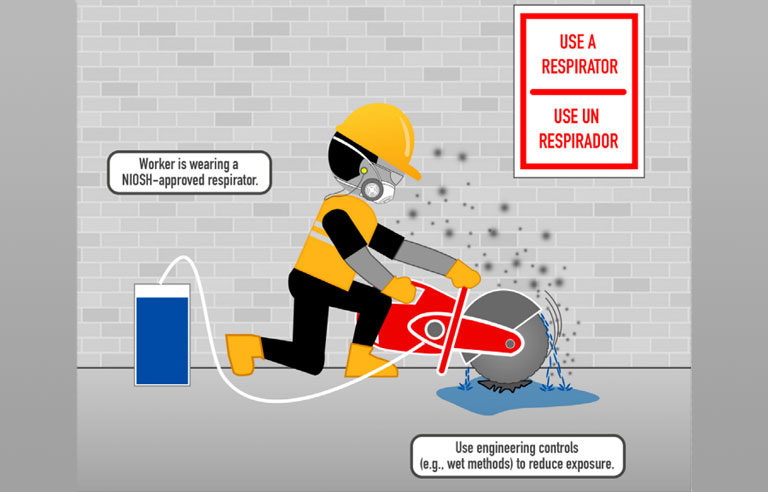Respiratory protection: NIOSH publishes toolbox talk

Washington — Knowing how to select, use and maintain NIOSH-approved respirators can help promote proper respiratory protection practices and protect construction workers from unsafe airborne contaminants, according to a new toolbox talk published by the agency and CPWR – The Center for Construction Research and Training.
NIOSH and CPWR encourage employers to examine all avenues to reduce worker exposure to potentially dangerous dusts and fumes.
Among the first steps should be to try to eliminate or replace the hazard, implement engineering controls (e.g., local exhaust ventilation), or implement administrative controls (e.g., rotating workers between hazardous tasks). When these controls aren’t feasible or are insufficient in reducing harmful exposures, respiratory protection must be properly selected and users must be fit tested. Workers also must be trained and follow both employer and manufacturer instructions for proper use, inspection, maintenance and storage of respiratory protection devices. This includes proper donning and doffing of devices.
NIOSH and CPWR remind employers that they’re responsible for providing NIOSH-approved respirators as necessary to protect worker health, as required by OSHA in its standards on respiratory protection.
Among the types of devices that can be used to protect workers are filtering facepiece respirators; elastomeric half-mask respirators; and half-mask, full-facepiece and hood/helmet powered air-purifying respirators. For any employer providing respirators, the process must include direction from an OSHA-required written respiratory protection program.
NIOSH’s respiratory protection webpage features answers to nearly 20 frequently asked questions.
In addition, NIOSH sets recommended exposure limits for airborne contaminants and OSHA mandates legal enforceable permissible exposure limits, with which employers are required to comply.
Post a comment to this article
Safety+Health welcomes comments that promote respectful dialogue. Please stay on topic. Comments that contain personal attacks, profanity or abusive language – or those aggressively promoting products or services – will be removed. We reserve the right to determine which comments violate our comment policy. (Anonymous comments are welcome; merely skip the “name” field in the comment box. An email address is required but will not be included with your comment.)

